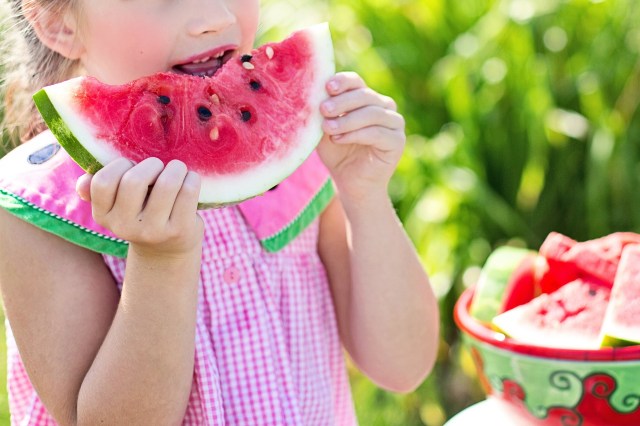It may seem like your child’s snack times are defined by endless requests for “junk” food. Requests for cookies, chips, and ice cream—to name a few—are made while driving in the car, riding in the stroller, sitting on the couch and maybe even during dinner. To help parents navigate, The Goddard School’s team of early childhood health and education experts share 10 tips on how to swap “junk” for healthy alternatives and how to make healthy snacking fun!
Dr. Jack Maypole, pediatrician and member of Goddard’s Educational Advisory Board (EAB), offers three easy ways to swap in healthy foods in place of your child’s favorite maybe not-so-healthy treats:
1. Keep it out of the house. Help your child avoid carb-loaded sugary items by buying very little to none of them. Instead, keep your fridge stocked with fresh, age-appropriate fruit like bananas, grapes, apples, peaches or berries.
2. Watch the drinks. Milk, within reason, and water are great beverage choices for young children. If your child is bored with these options, flavored seltzer can be a great alternative. The occasional chocolate milk, juice or soda is fine for most children. However, if having them in the house is too much of a temptation for your child, see tip number one. And if you do buy orange juice, for example, be sure to buy the variety with calcium and vitamin D supplementation.
3. Redefine desserts. Limit sweets in terms of amount and frequency and teach your child that dessert doesn’t have to equal “junk” food. For example, if your child is craving dessert after dinner, offer a healthier alternative that is still sweet such as blueberries in a bowl of milk. And remember to encourage kids to eat a reasonable portion of their dinner before they tuck into a sweet after-meal snack.
In addition to finding healthy alternatives, another step is to help your child enjoy eating them. Goddard’s EAB chairwoman Lee Scott is an early childhood development expert and shares seven ideas to make healthy snacking fun:
4. Teach them a trick. Help your preschooler carefully work with a peeler to learn how to peel an apple (or peel a tangerine by hand). Can they peel the whole skin in one go? Probably not. But trying can be a fun challenge.
5. Be expressive with veggies. Cut up fruits and vegetables and have your child create faces with the pieces on a plate. Ask them to make a silly grin or show a sad frown and then talk about the good foods in each face. This also supports creativity and helps them explore emotional expressions.
6. Find a rainbow. If you can, take your child food shopping and challenge them to help you pick out good foods in five main colors—red, orange, yellow, green and blue.
7. Create a family recipe. Build a fun and healthy snack together. Take a picture of the result, list the ingredients, give it a creative name and share with friends and family.
8. Incorporate math. Two handfuls of a small snack like raisins, blueberries or nuts are all you need to create a guessing game. Which hand has more? While your child decides, talk about strategies that go beyond counting. Does one pile weigh more than the other? Is one pile taller or wider?
9. Name foods. Using the letters in your child’s name, have them name a yummy, healthy food that begins with each letter. If you can’t think of one, research foods and discover new items to try such as umbrella fruit for “U.”
10. Use books. Books are a great way to support conversations about healthy eating while making it enjoyable for children. Here are some of Goddard’s favorite books that use humor, wonderful illustrations and great stories to help convey these messages and lessons to children in a manner they will understand:
- The Sandwich Swap by Queen Rania of Jordan Al Abdullah and Kelly Dipucchio
- The Very Hungry Caterpillar by Eric Carle
- Eating the Alphabet by Lois Ehlert
- Bee Bim Bop! by Linda Sue Park
- Gregory the Terrible Eater by Mitchell Sharmat
As you practice these 10 healthy snacking tips, remember to never say never when it comes to your child’s snack requests. Absolute vows tend to fail absolutely. Having the occasional ice cream cone or juice box is OK, as long as your child eats an overall balanced meal for the day. Finding this balance and guiding your child to understand when snack requests will be satisfied will help them learn that eating a meal together is an occasion of love, culture and joy—without the sugar high to follow!











